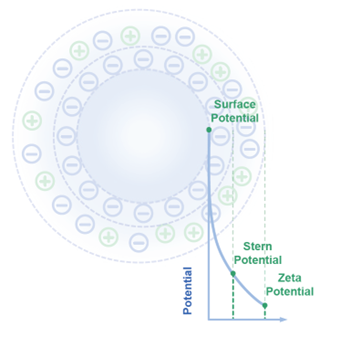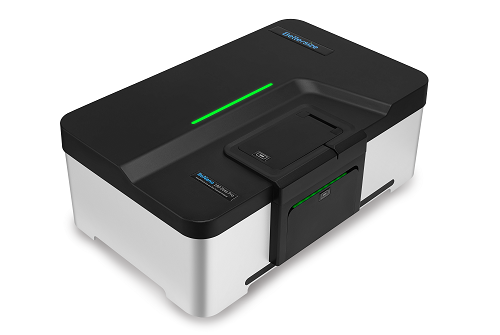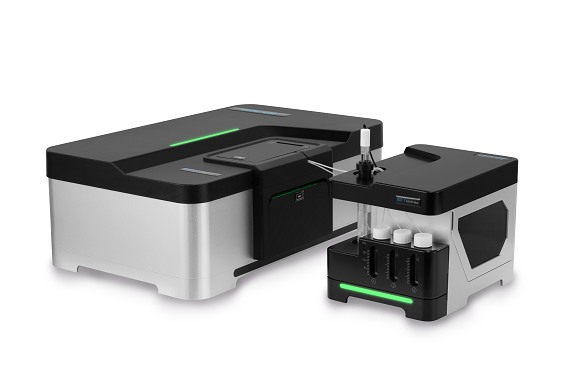What is Zeta Potential?
Zeta potential provides critical information about the surface charge of particles and colloids, influencing their stability and interactions. Understanding and controlling zeta potential enables you to optimize formulations, stabilize suspensions, and prevent particle aggregation or flocculation.
Particles usually carry charges on their surfaces in aqueous systems, surrounded by counter-ions that form a firm inner Stern plane and an outer shear plane (particle-liquid interface).
The electrostatic potential reaches the maximum at the particle surface, which is called the surface potential. The Stern plane is located at the electrical double layer's inner region, where ions are strongly bounded. The electrostatic potential at the Stern plane is called the Stern potential.
The shear plane describes the circle where the number of ions, both positive and negative, are equal, and thus an electrochemical equilibrium is established at the particle-liquid interface. The electrostatic potential in this region is called zeta potential.

The zeta potential can be regarded as the potential difference between the dispersion medium and the stationary layer of the fluid attached to the particle layer.
The sign of zeta potential indicates whether the particles are positively or negatively charged: particles with positive zeta potentials are positively charged, and those with negative zeta potentials are negatively charged.
A colloidal system with a higher zeta potential tends to be more stable and less likely to form aggregates, while lower zeta potentials lead to flocculation and coagulation of the particles due to Van der Waals forces. Measurement of zeta potential is an advantageous method to evaluate the stability of the colloidal system.
Besides Zeta Potential, the BeNano series can also determine the nanoparticle size, molecular weight and rheological parameters.
These technologies are widely applied in academic and manufacturing processes of various fields including chemical engineering, pharmaceuticals, food and beverage, inks and pigments, life science, food and beverages, battery testing etc.
In combination with the BAT-1 autotitrator, it is possible to automatically analyze the zeta potential as a function of pH and the isoelectric point (IEP) of a colloidal system.

Bettersize BeNano Series
Nanoparticle Size and Zeta Potential Analyzer
Why choose BeNano Series ?
• Dynamic Light Scattering for particle size
• Electrophoretic Light Scattering for zeta potential
• Static Light Scattering for molecular weight
• DLS Micro-rheology for rheological properties
Unique Benefits You Can Enjoy:
• Backscattering Detection for higher sensitivity
• Phase Analysis Light Scattering for low electrophoretic mobility samples
• BAT-1 autotitrator for pH trend measurement

Bettersize BAT-1 Autotitrator
The BAT-1 autotitrator is an ideal option for the BeNano series to automatically analyze the zeta potential as a function of pH and determine the isoelectric point (IEP) of a colloidal system.
BeNano Insights:
From Pharmaceuticals to Nanomaterials

A collection of 𝟮𝟰 application notes!
Dive deep into the analysis of nanoparticle size, zeta potential, molecular weight, gaining valuable insights for applications in pharma, protein, abrasives, batteries, pigments, food...









